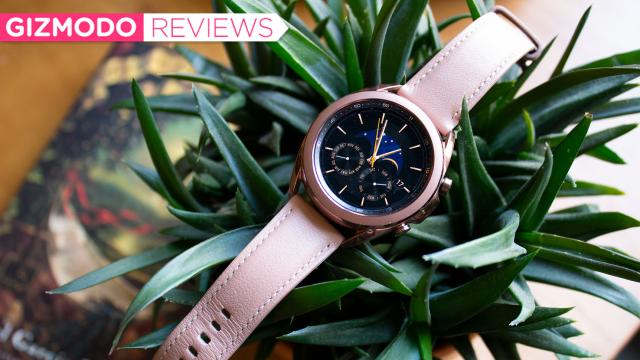I’ve been searching for years for an Android smartwatch that I could confidently recommend as being as good as, if not better than, the Apple Watch. Well, the search is over. The Samsung Galaxy Watch 3 is that smartwatch.
This won’t be surprising to Samsung fans. All of Samsung’s smartwatches thus far have been stylish, functional, and ambitious. The main thing holding its most recent watches back — the original Galaxy Watch, the Active, and the Active2 — was not-so-great accuracy when it came to step-tracking, GPS workouts, and, in the case of the Active, heart rate-monitoring. It seems Samsung’s taken those criticisms to heart, because on all three fronts, there has been a marked, dramatic improvement. That’s huge.

Samsung Galaxy Watch 3
What is it?
Samsung's latest flagship smartwatch
Price
$649 for the Bluetooth 41mm; $699 for the 45mm. Add $100 for LTE versions, not including separate carrier fees.
Like
Samsung finally fixed the accuracy of its fitness algorithms! ECG feature recently cleared by FDA. Adds host of health feature updates. Smaller, lighter, and thinner than previous Galaxy Watch. Kept the physical rotating bezel. So much to like.
No Like
Samsung Pay limited to Samsung phones. You're stuck with Bixby. Battery life still just 2 days.
I’ll do a deeper dive into accuracy in a bit, but with the Galaxy Watch 3, Samsung did more than just improve its fitness algorithms. It’s also joined Apple in offering a flagship smartwatch with Food and Drug Administration-cleared health features. In dramatic fashion, Samsung announced during its Unpacked event that it had gotten a thumbs-up for its ECG feature, which can detect atrial fibrillation, from the FDA — something that only Apple has managed to achieve in the U.S. (Full disclosure: That ECG capability actually hasn’t gone live yet, so I wasn’t able to test it for this review.)
The watch is also capable of measuring blood pressure — though it needs to first be calibrated with a more traditional cuff. So far that feature is only available in South Korea, as it’s still undergoing the health clearance review process globally. Still, blood pressure-tracking is a notable achievement, considering the only smartwatch that’s been cleared for that is this ugly marvel from Omron.
All that would’ve been enough to be competitive with the Apple Watch, but Samsung has also stepped up its game with several new features. The Galaxy Watch 3 sports a widget to measure your blood oxygen levels (something the Apple Watch doesn’t do yet), advanced running metrics, trip detection, video workouts via the Samsung Health app, gesture controls, and a beefed-up sleep-tracking algorithm. There are also small but useful tweaks, like the ability to display photos from messages, view chat history from your wrist, and use smart replies. At this point, the only thing it’s missing is a hand-washing timer, which is already on Wear OS watches and coming to watchOS 7 on the Apple Watch this spring.
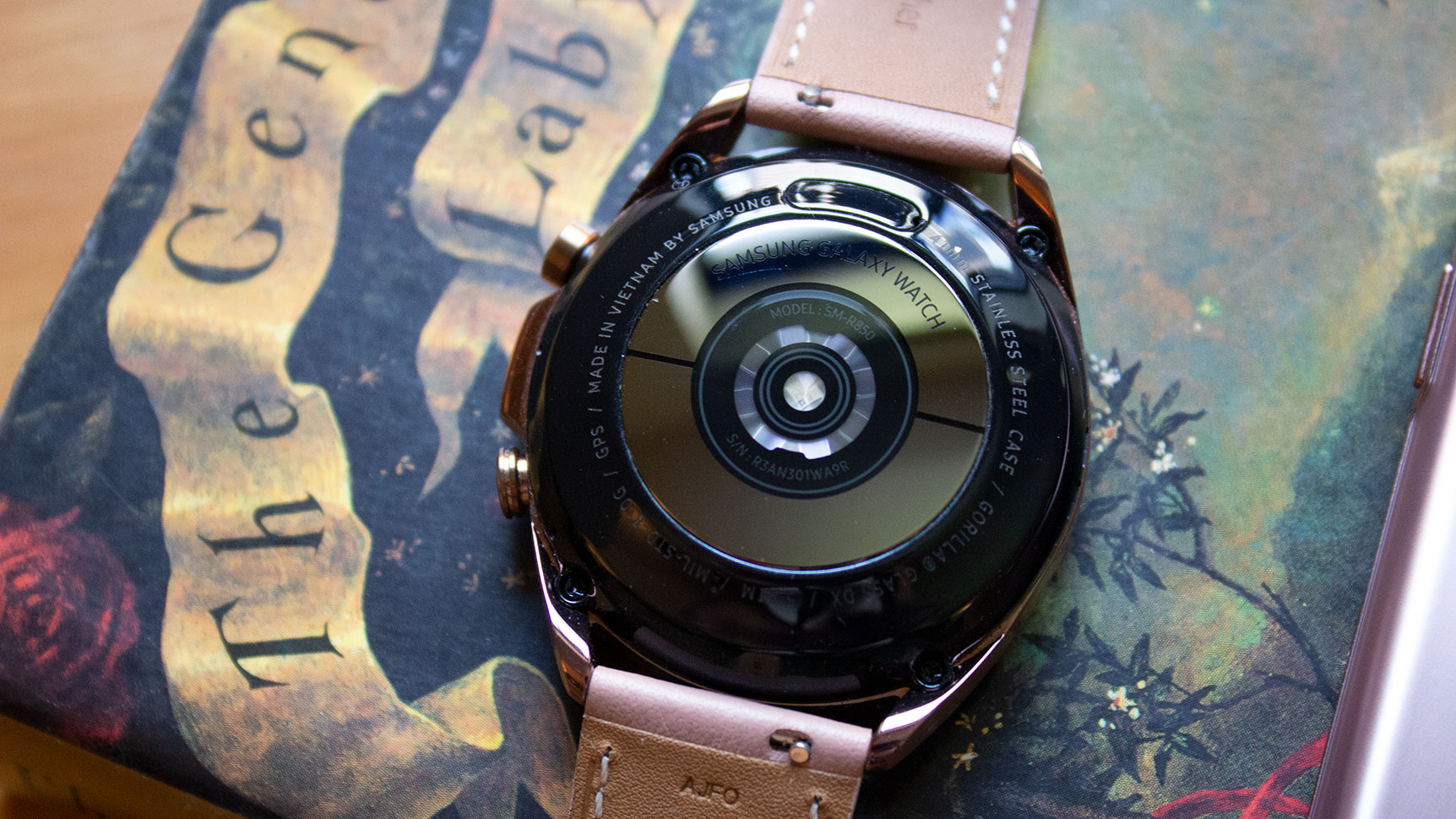
Under the hood, Samsung has boosted the RAM up to 1GB and doubled on-board storage to 8GB. Otherwise, in terms of sensors and processor, the Galaxy Watch 3 hasn’t changed much from the Active2. But the Galaxy Watch 3 is 14 per cent thinner, 8 per cent smaller, and 15 per cent lighter than the original Galaxy Watch. Altogether the health updates, the improved accuracy, the new features, and the smaller form factor gave me high expectations for the Galaxy Watch 3 — and after more than a week of testing, I’m happy to say Samsung’s finally nailed it.
After a week with the 41mm version (there’s also a 45mm version), I found the smaller, thinner, and lighter design made a huge difference. While the original Galaxy Watch was stylish, I found it to be a little thick, a smidge too heavy, and overpowering on my wrist. It was fine for everyday wear, but I wasn’t a fan of its heft when running or biking. The Galaxy Watch 3 is still a lil thicker than ideal — it’s definitely chunkier than say, the Fitbit Versa 2 or the Apple Watch — but it’s not an eyesore. It’s also comfortable. It wasn’t cumbersome during exercise, and I never found myself waking up in the middle of the night to rip the watch off my wrist. The smaller size doesn’t mean Samsung skimped on the screen. The 1.2-inch display is crisp, easy to read, and the only bezel is the signature physical rotating bezel.
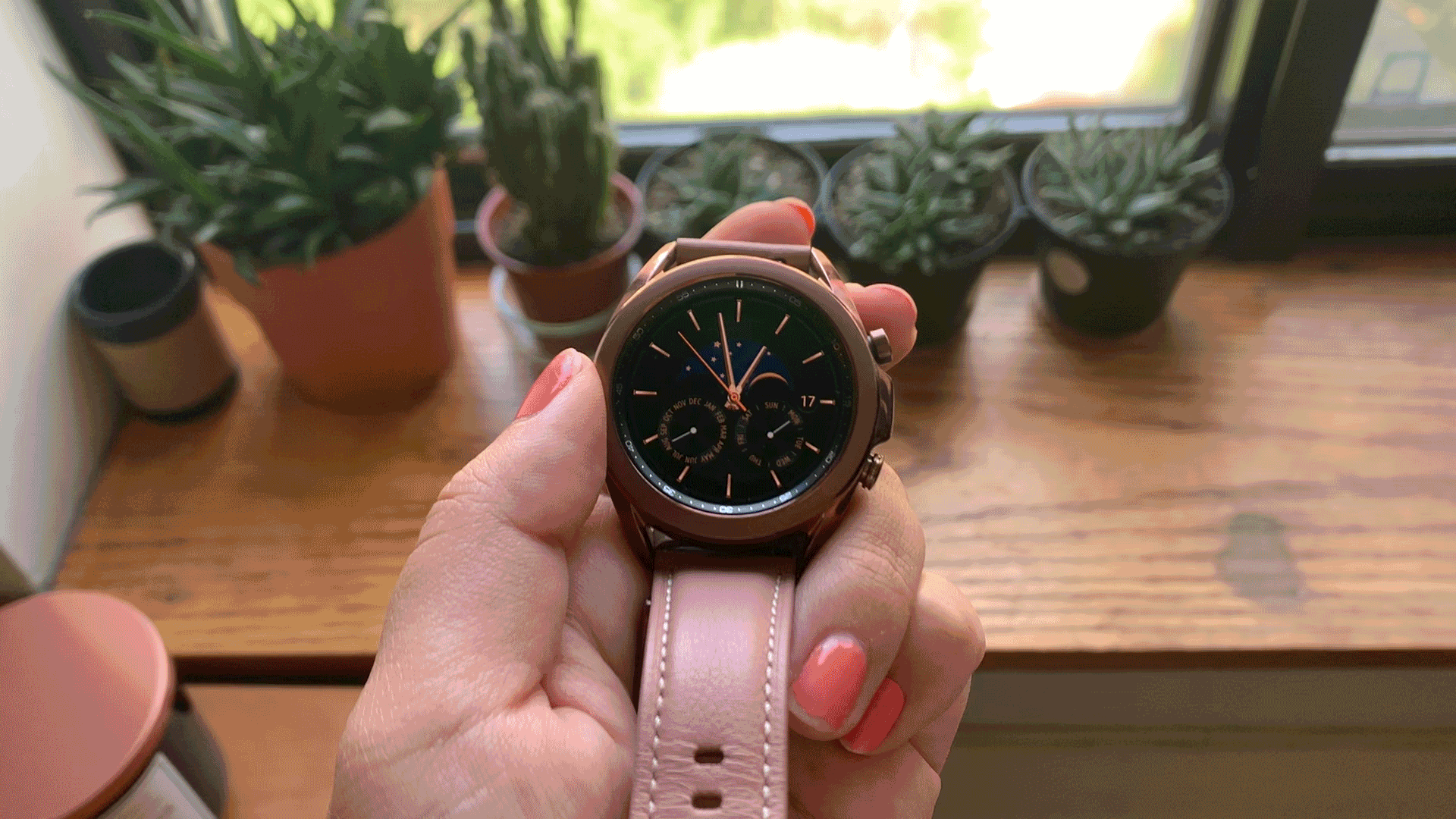
Speaking of the rotating bezel, after doing away with it on the Active and then switching to a digital bezel with the Active2, I was relieved Samsung brought it back in the Galaxy Watch 3. It’s still the most intuitive way to switch between screens on any smartwatch, and it’s just so damn satisfying to use. I did, however, appreciate that my review unit had a smooth bezel, sans the gear-esque notching. It’s a less masculine, cleaner look, and feels like Samsung is finally graduating from the gear motif it tacked onto most of its watches pre-2018. If you like the notched bezels, you can still find it on the 45mm — I’m just glad there’s an alternative option that appeals to more people.
As an everyday smartwatch, the Galaxy Watch 3 is excellent. Things like push notifications have never been Samsung’s problem, and now with the aforementioned tweaks to chats and smart replies, the Galaxy Watch 3 is slightly more polished than its predecessors in that regard. That said, some of the “problems” with the Galaxy Watch haven’t entirely gone away. Namely, the third-party app offerings are still meh. You get more variety with the Apple Watch and Google’s Wear OS watches, though at least Samsung’s store isn’t quite as limited as Fitbit’s app store. It’s also not like there’s nothing.
Samsung gets a big, big win by automatically integrating Spotify as a widget, and premium users can download offline playlists onto the wrist. Weirdly, the Galaxy Watch 3 also adds Microsoft Outlook support. There’s an Uber app and various running apps like MapMyRun and Strava. You can also watch YouTube videos on the watch using the Samsung Internet app. I don’t know why you would want to, but you can (and that video playback is much snappier than on the Active2).
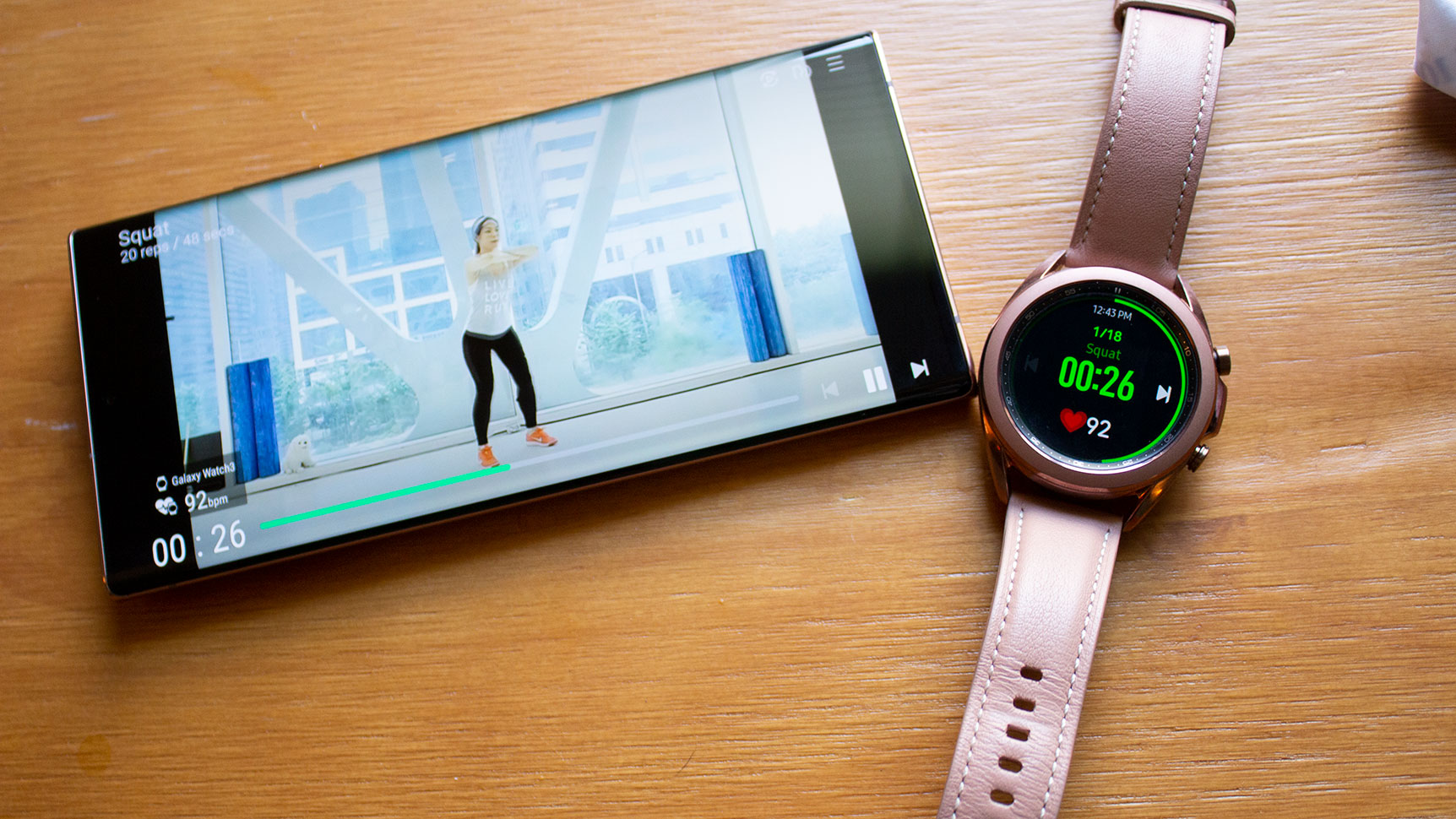
I found some of the other new features a bit mixed. Despite launching myself several times onto my couch and bed, I never managed to trigger the trip detection function, which calls four of your contacts should you take a serious fall. This is probably good when it comes to preventing false alarms, but I can’t say how well it works in an emergency, as I’m not going to injure myself for a smartwatch review. Gesture controls were also a bit of a flop.
Did I answer a phone call by clenching and unclenching my fist? Yes. Was it an easy feature to use? No, though I could see how it might be helpful for accessibility reasons or if your hands are tied while cooking. However, the video workouts I did using the Samsung Health app were decent. Some of the workouts were a little boring for my taste, but it was helpful to get a buzz each time the exercise changed, pause the video from the watch, and even view my heart rate directly from the workout video.
On that note, Samsung’s a lot like Apple in that it’s always trying to push its ecosystem of devices and platforms. Obviously, this watch will work better on Android than iOS — but it’ll also work best if you’re on a Samsung phone. For instance, Samsung Pay isn’t an option for iPhone users and non-Samsung Android phones. You also can’t download Google Pay or Google Assistant onto the watch, so truly, you’re stuck with Bixby. Another example: Even though I tested the watch with the Galaxy Note20 Ultra, I don’t have a Samsung TV with Smart Cast anymore so I wasn’t able to stream the Samsung Health workouts to the TV. Even with these caveats, Tizen is still faster than Wear OS and in my opinion, offers a better overall smartwatch experience.
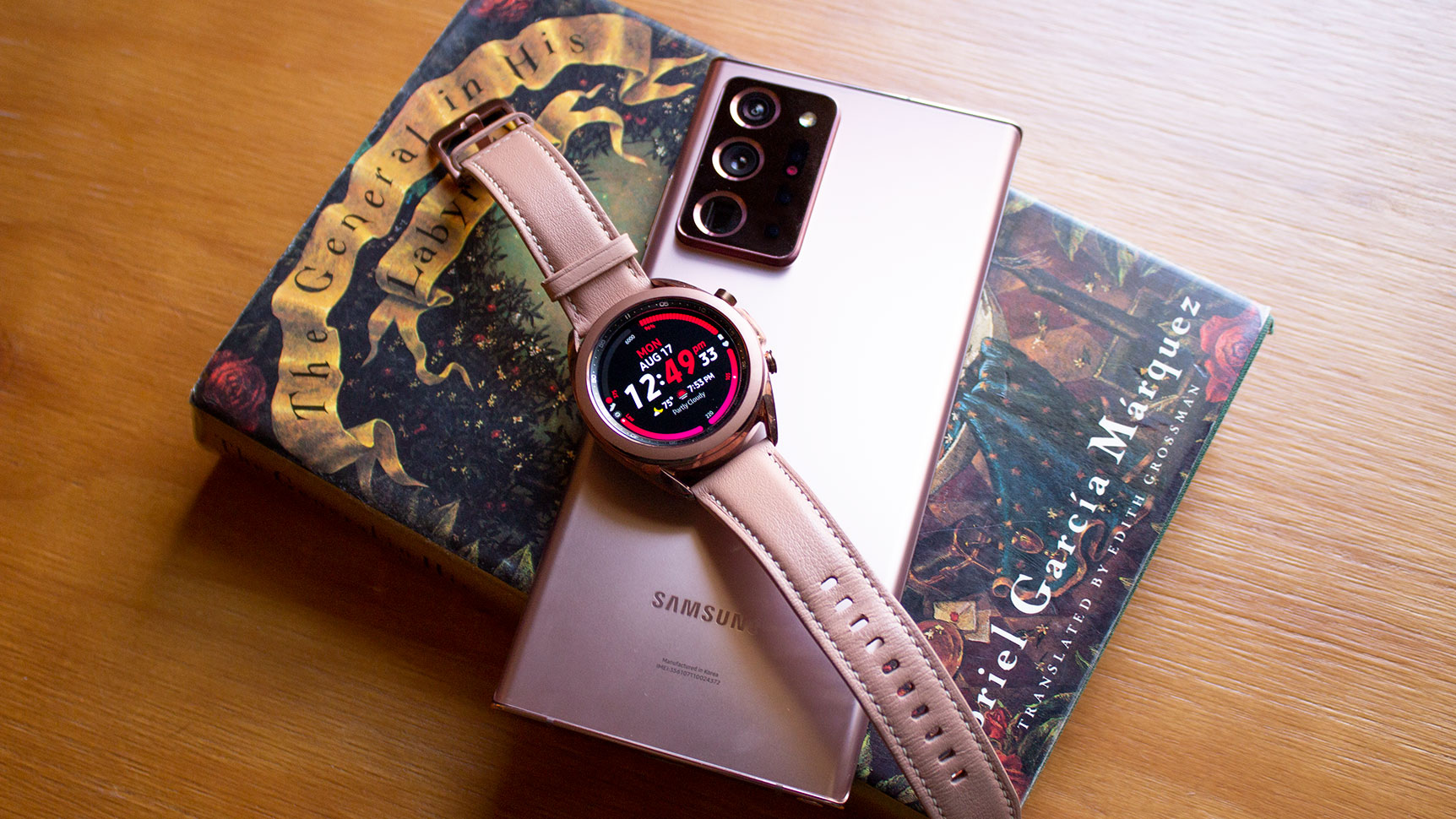
Battery life also hasn’t made much progress from generation to generation. You won’t get much more than two days on a single charge, and you’ll get even less if you do a lot of GPS workouts, or if you use the cellular version, or don’t turn off the always-on display. I found a 30-minute GPS run tended to zap about 10% battery, and the most I ever got was roughly 56 hours before needing to charge. The 45mm watch has a slightly bigger battery, so you might get more out of that model — but not by much. Still, this is better than the Apple Watch, which has to be charged nightly. It’s on par with or better than most Wear OS watches, too.
The one thing Samsung absolutely did right with the Galaxy Watch 3 is fixed the company’s one true weakness: fitness-tracking. I went on five test runs and seven test walks, so I can confidently say the improved accuracy is not a fluke. The Galaxy Watch 3’s heart rate measurements were always on par with the Apple Watch Series 5 and within 5 beats per minute of my Polar H10 chest strap. Across all five GPS runs, the Galaxy Watch 3 was within 0 km of my running app and the Series 5.
This is a drastic improvement considering previous Samsung watches, in my testing, were off by as much as 0 km, or roughly 15-20 per cent. For four of my GPS runs, the Galaxy Watch 3 underreported my distance by about 2 km compared to the Series 5 and 2 km of my iPhone. This was also true for runs of varying distances; it underreported by the same amount for runs as short as 2 km, as well as longer 6 km runs. Every smartwatch is going to give you slightly different results. What’s important here is that the Galaxy Watch 3 delivered consistent results across several tests — meaning if you were to use it for training, you’d be able to trust your progress.
This held true for step-tracking, too. On a day where I logged 11,236 steps and 8 km of walking on the Series 5, the Galaxy Watch 3 reported 10,702 steps and 8 km. Conversely, when I tested the Active2 last September, it told me I had walked 29,934 steps and 21 km — over 11,000 steps and 10 km more than the Series 5 I had tested it against. A difference of about 1,000 steps between daily step counts is acceptable, and the Galaxy Watch 3’s results are well within that range. This is a huge step up over what I got with the Active2.
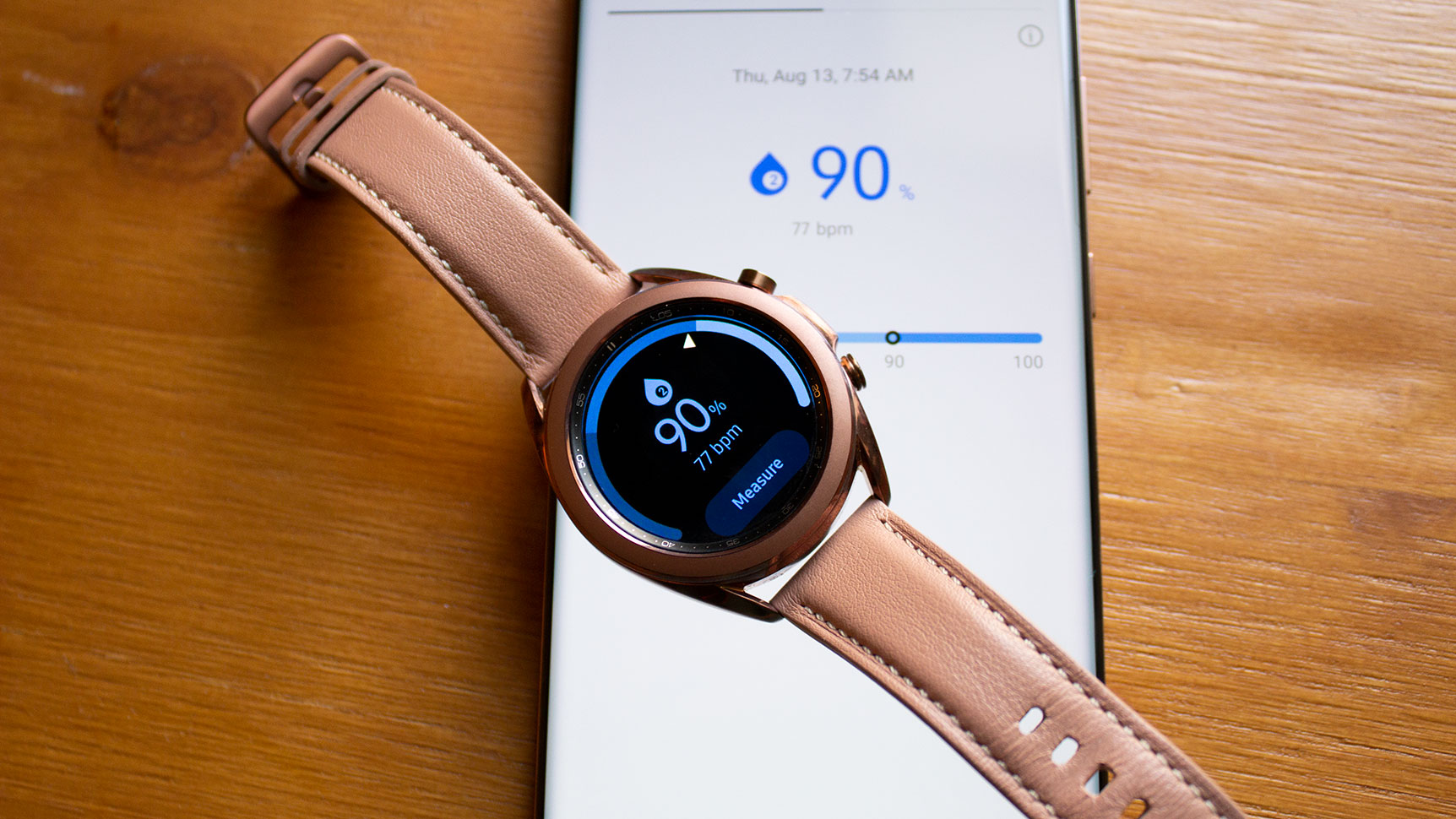
I was also a fan of the new advanced running metrics. You can now get a rating based on data points like asymmetry, contact time, flight time, regularity, vertical, and stiffness. Depending on your run, you’ll now get a grade for each of those metrics ranging from great, good, or improve. What are those metrics, exactly? At a glance, they seem real obtuse, but Samsung has a neat little explainer article within the Samsung Health app.
Asymmetry, for instance, is how much time each foot is in contact with the ground — a high level of asymmetry leads to fatigue, and possibly injury. It’s similar to the regularity metric, which is a measure of how consistently your body moves during a run. Meanwhile, things like contact and flight time measure how long your feet are in the air versus how long they stay on the ground; both are good measures of how efficiently you run. The same is true for the vertical metric, which measures the “up-and-down movement of your centre of mass.” Lastly, the stiffness metric analyses how much force you exert with each step, which can also be a measure of fatigue.
Altogether, these are good indicators of your running form, which can be hard to improve on your own. What I appreciated was that Samsung’s app also gives you tips on exercises that can help improve the running metrics you’re not so good at. For instance, while I got pretty good marks on every metric — humblebrag — I am apparently a horribly stiff runner. So to improve that, the app gave me suggested running drills. For instance, it recommended I do ankle jumps and even provided a short explanation of how to do that exercise, as well as guidance on reps and duration.
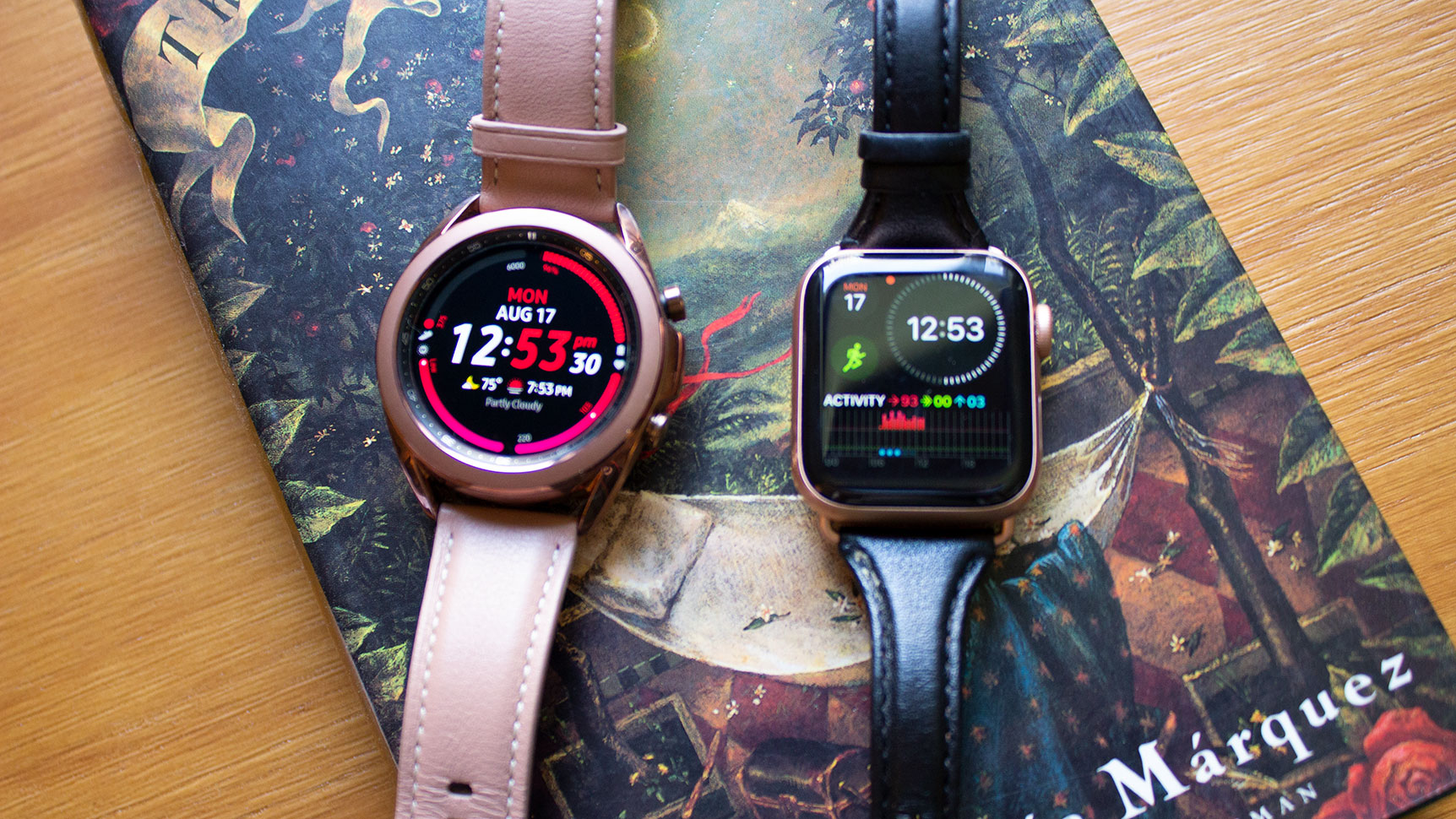
Sleep-tracking is another area in which Samsung has improved. I found the Galaxy Watch 3 accurately recorded every single instance of my beloved pets waking me up with their witching hour shenanigans over the course of a week. However, I’m a little baffled by my sleep scores — I generally scored somewhere between 30 and 50 out of 100 on a given night, but the app doesn’t really go into how that score is calculated. As for sleep stages, it was roughly on par with the Oura Ring — though the ring rated my recovery much more generously than the Galaxy Watch 3. In any case, while Samsung’s sleep-tracking isn’t perfect, it is more detailed than what you’ll get with the Apple Watch when watchOS 7’s sleep-tracking feature drops later this spring.
I’ll say it again: This is the best non-Apple smartwatch I’ve ever tested. Hell, considering the longer battery life, more advanced sleep-tracking, accurate metrics, classic design, the rotating bezel, and the forthcoming ECG capability, even iOS users might want to consider the Galaxy Watch 3. (Though as I mentioned earlier, there are also limitations on iOS, like the inability to respond to text messages from the watch.) Price-wise, the two are about the same.
The Galaxy Watch 3 starts at $649 for the 41mm and $699 for the 45mm; that’s on par with the $649 GPS-only Apple Watch. LTE versions go up to $799 and $849, which is actually slightly cheaper than the LTE versions of the Apple Watch (though don’t forget additional carrier fees).
The best Wear OS watch, in my opinion, is the Suunto 7, which is also more expensive at $799 and has no cellular option. Fossil’s cheaper Wear OS watches, while stylish, just don’t compete in terms of features. The only reason a non-Samsung Android user might want a Wear OS watch over the Galaxy Watch 3 is for NFC payments and Google Assistant. But if those aren’t your top two priorities for a smartwatch, the Galaxy Watch 3 is hands down the best Android smartwatch you can buy right now.
README
- It’s the best Android smartwatch. Period.
- Smaller, lighter, and thinner than the original Galaxy Watch.
- Keeps the physical rotating bezel! Praise be!
- The main caveat is it works best with Samsung phones, though the majority of its features are still available for other Android phones. There are more limitations for iOS.
